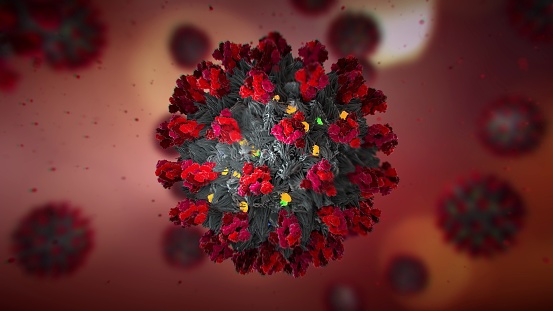Media release
From:
UNCOVERING HOW T CELLS RECOGNISE THE SARS-CoV-2 VIRUS SPIKE PROTEIN
The immune system is vitally important for resolving COVID-19 when individuals are infected with the SARS-CoV-2 virus. Moreover, the vaccines that are being administered to millions of people across the globe are designed to ‘pre-warn and arm’ the immune system so that if infected with SARS-CoV-2, individuals are significantly less likely to develop severe disease or die. Here, two crucial arms of the immune system, namely B cells and T cells, play a central role.
While we have a molecular understanding of how antibodies, which are produced by B cells, can bind and neutralise the spike protein from SARS-CoV-2, up until now researchers did not know how T cell receptors (TCRs), which are found on T cells, recognise antigens that arise from the spike protein.
“T cells play an important role in immunity against both SARS-CoV-2 vaccination and severe acute respiratory infection. Although T cells in COVID-19 have been studied previously, the molecular basis underpinning TCR recognition of SARS-CoV-2 remained unknown. It has been a pleasure working with the Monash University team to conduct this extremely important work to understand how T cells recognise an antigen from SARS-CoV-2,” said University of Melbourne Professor Katherine Kedzierska, a laboratory head at the Peter Doherty Institute for Infection and Immunity.
In a world first finding, co-led by Monash University’s Dr Priyanka Chaurasia, Dr Jan Petersen and Professor Jamie Rossjohn, and Professor Kedzierska, the team analysed the TCR recognition of a spike protein fragment when presented by an immune molecule, termed Human Leukocyte Antigen A2 (HLA-A2). This work, which utilised the Australian Synchrotron, was published in the Journal of Biological Chemistry.
“This is a piece of a larger puzzle. While SARS-CoV-2 continues to evolve, we have to build our understanding of how effective immune responses work,” said Dr Jan Petersen.
The team provided important molecular insight into understanding how T cells of the human immune system respond to SARS-CoV-2. Different individuals mount differing immune responses to SARS-CoV-2, and this work provided fundamental insight into such an immune response.
Read the full paper in Journal of Biological Chemistry titled: Structural basis of biased T cell receptor recognition of an immunodominant HLA-A2 epitope of the SARS-CoV-2 spike protein.
DOI: 10.1016/j.jbc.2021.101065.
About the Monash Biomedicine Discovery Institute at Monash University
Committed to making the discoveries that will relieve the future burden of disease, the newly established Monash Biomedicine Discovery Institute at Monash University brings together more than 120 internationally-renowned research teams. Spanning six discovery programs across Cancer, Cardiovascular Disease, Development and Stem Cells, Infection and Immunity, Metabolism, Diabetes and Obesity, and Neuroscience, Monash BDI is one of the largest biomedical research institutes in Australia. Our researchers are supported by world-class technology and infrastructure, and partner with industry, clinicians and researchers internationally to enhance lives through discovery.



 Australia; VIC
Australia; VIC



